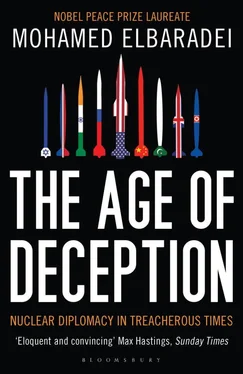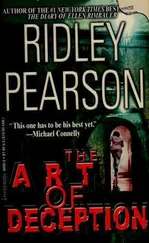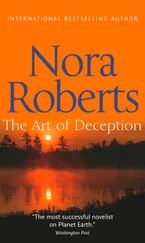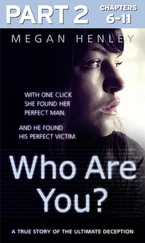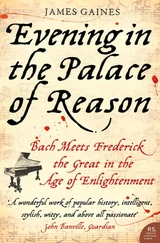Still, improbable as it might seem, after the frustrations and even outrage of these years at the helm of the IAEA, I continue to believe that diplomacy has the capacity to resolve problems that might seem intractable. A key reason for optimism is the recent progress—both ideologically and concretely—on nuclear disarmament: a complete change of face, driven by the awareness that, with the spread of nuclear technology, the rise of extremism, and the increase in cases of proliferation, continuing the status quo is a formula for self-destruction. In a landmark essay, four seasoned veterans of the cold war—Henry Kissinger, George Shultz, Sam Nunn, and William Perry—declared the world to be “on the precipice of a new and dangerous nuclear era” and were bold enough to advocate, as a realistic goal, “a world free of nuclear weapons.” [2] “A World Free of Nuclear Weapons,” Wall Street Journal , January 4, 2007.
The response was overwhelming. In the year that followed the article’s publication, I had the opportunity to touch base with each of these gentlemen. They spoke about the enthusiastic reception of their call for disarmament, which was far more than just a well-written op-ed; they each saw it as the start of a collective campaign to change the global outlook. [3] In the lead-up to the 2008 U.S. presidential primaries, Bill Perry and Sam Nunn told me that, among the four of them, the two Democrats were working on the two remaining Democratic candidates, and the two Republicans were working on the Republican candidates, to ensure that, regardless of who made it into office, the next U.S. president would be committed to working toward a nuclear-weapon-free world.
On the anniversary of their first essay, the same four men published a second essay, following a conference at Stanford University’s Hoover Institution. This time, they gave concrete recommendations for how to achieve disarmament. [4] George P. Shultz, William J. Perry, Henry A. Kissinger, and Sam Nunn, “Toward a Nuclear-Free World,” Wall Street Journal , January 15, 2008.
That these stalwart cold warriors have moved in this direction is a stark indication of a new urgency animating disarmament activism.
Margaret Beckett, the British foreign secretary, added her voice to this call for disarmament, indicating her government’s approval and outlining steps to be taken:
What we need is both a vision—a scenario for a world free of nuclear weapons—and action—progressive steps to reduce warhead numbers and to limit the role of nuclear weapons in security policy. These two strands are separate, but they are mutually reinforcing. Both are necessary, but at the moment too weak. [5] Shultz et al., “Toward a Nuclear-Free World.”
A number of similar efforts are under way. A major international campaign was launched in Paris in December 2008 under the name Global Zero. It has been joined by more than two hundred public figures from all walks of life: former heads of state, military generals, Nobel Prize winners, ministers and parliamentarians, influential writers, and other civic leaders. Using their influence and contact networks, these individuals have sought to advance and expand the diplomatic dialogue among key governments, advocating a phased drawdown of nuclear arsenals by all countries possessing such weapons.
On April 8, 2010, U.S. president Barack Obama and Russian president Dmitry Medvedev signed a new Strategic Arms Reduction Treaty (START) in Prague. The limit set on deployed strategic warheads under the new treaty is 1,550, well below that of the 2002 Moscow Treaty—and this time the numbers will be verifiable and irreversible. Even before ratification of the new treaty by the U.S. Senate, the United States started to implement its provisions. The State Department’s published statistics at the end of 2009 showed a total of 1,968 deployed strategic warheads. According to the Federation of American Scientists, “the last time the United States deployed less than 2,000 strategic warheads was in 1956.” [6] Hans M. Kristensen, “United States Moves Rapidly Toward New START Warhead Limit,” Federation of American Scientists Strategic Security Blog, May 2, 2010, retrieved at www.fas.org/blog/ssp/category/hans_kristensen .
This movement on the part of the United States and Russia—the two countries with the greatest responsibility to show leadership in disarmament, since together they account for more than 95 percent of the nuclear warheads in existence—has sent a quite positive signal to the global community. But it is not enough. Both countries must speed the pace of dismantling the thousands of undeployed weapons and downgrade deployed weapons from their cold war alert status, to allow more time for the leaders of each country to verify and respond to reports of possible nuclear weapons use. In addition, the new START treaty must be followed and strengthened soon by other multilateral arms control agreements, such as the Comprehensive Test Ban Treaty and the Fissile Material Cut-off Treaty, both of which have long been in the works. But it is gratifying to see substantial movement in the right direction. By demonstrating their irreversible commitment to achieving a world free from nuclear threat, the nuclear-weapon states can greatly contribute to the legitimacy of the nonproliferation regime and gain the moral authority to detect, deter, and defeat any cheaters in the system, with the support of the entire international community.
Another reason for hope, as I read the situation, is in the potential for a negotiated agreement in the U.S.-Iran standoff. Having watched what has and has not worked in complex nuclear diplomacy scenarios, I believe the elements for a solution are finally in place. Both sides are motivated to achieve a partnership. This does not mean every individual is so motivated; there are hordes of detractors firmly planted in both governments—not to mention pundits who prowl the media airwaves and populate various editorial boards. But the key individuals are keen to find a way forward.
The change that took place in mid-2009 is without precedent. To an audience whose customary window onto such goings-on consists of the Washington Post or the Financial Times , it is difficult to convey the nature of this behind-the-scenes shift in attitude. But in the frenetic final weeks of my tenure, the efforts to identify creative solutions, along with the reassurances of goodwill and respect passed back and forth between Iran and the United States, were all but unheard of during the previous eight years. The subsequent breakthroughs, admittedly, have been small—a few discussions between officials, exchanges of letters behind the scenes, and the reconvening of the six parties in negotiation, with the United States finally represented at the table. Progress is always tentative. Long periods of 2010 were frittered away with additional posturing and delays. But as such small steps alter the notion of what is possible, the concept of renewed ties between the two countries is no longer quite so unimaginable. Whatever the outcome, this change is a testament to the shifts that are possible when the necessary political will is present, with fairness and equity as the starting point.
Of course, Iran is not the only nuclear game in town. North Korea’s nuclear weapons capability, even if not fully defined, has long been a major source of regional insecurity in East Asia. The complex political maneuvering that emanates from Pyongyang is historically difficult to read. But on this front, too, the seeds have been sown for a peaceful resolution of nuclear proliferation concerns and other insecurities on the Korean Peninsula. Whatever the hurdles, past lessons tell us that any solution lies in helping North Korea move away from its pariah status and return to the community of nations.
Читать дальше
